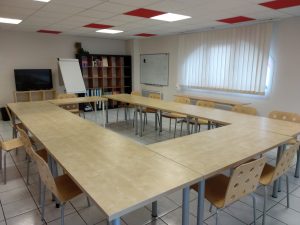Accueil » Smart City : une dicature… et si c’est pour sauver la planète ?
Smart City : une dicature… et si c’est pour sauver la planète ?
Avec le choc pétrolier, il a fallu penser à la consommation énergétique des bâtiments. La méthode la plus simple a été utilisée en premier. Puis quand elle n’a plus été assez performante, la méthode plus compliquée a été mise en œuvre. Aujourd’hui nous sommes arrivésaux limites de cette méthode. Il faut maintenant incorporer la dimension humaine. Il en est de même avec la notion de #smart city (smart city) et de gestion de centre-#ville.
Energy related occupant behavior in buildings, for example adjusting thermostat for comfort, switching lights, opening/closing windows, pulling up/down window blinds, and moving between spaces, is a key issue for building design optimization, energy diagnosis, performance evaluation, and building energy simulation due to its significant impact on real energy use and indoor environmental quality in buildings. However the influence of occupant behavior is under-recognized or over-simplified in the design, construction, operation, and retrofit of buildings. Occupant behavior is complex, stochastic and multi-disciplinary (Figure 1). Having deep understanding of occupant behavior and being able to model and quantify its impact on use of building technologies and energy performance of buildings is crucial to design and operation of low energy buildings. Existing studies on occupant behavior, mainly from the perspective of sociology, lack in-depth quantitative analysis. There are over 20 groups all over the world studying occupant behavior individually. The occupant behavior models developed by different researchers are often inconsistent, with a lack of consensus in common language, in good experimental design and in modeling methodologies. Due to the complexity and the great district discrepancy of occupant behavior, it is prerequisite for researchers to work together to define and simulate occupant behavior in a consistent and standard way.
Le comportement des occupants d’un bâtiments est très complexe. Il est fortement tentant de leurs imposer des règles strictes pour simplifier la gestion du bâtiment et augmenter ses performances. C’est typiquement devoir éteindre la lumière en sortant de la pièce ou devoir vivre avec un store baissé qui vous gache la vue.
Le comportement des habitants d’une ville n’est pas plus simple. La tentation d’imposer des comportements est, non seulement bien réelle, mais a été imposée bien souvent avec les dégats que nous vivons aujourd’hui. Il fallait faire ses courses à tel endroit, travailler à tel endroit, dormir à tel endroit… Cette « dictature » douce est la source de la désertification des centres-villes. Mais l’avantage de l’urbanisme sur l’architecture du bâtiment est que dans une zone, comme un centre-ville il est possible de faire des animations et d’activer telle ou telle dynamique pour optimiser ce qui doit être vu comme une « machine » à créer du bonheur, de la valeur … en « un » mot de la vie adaptée aux conditions et enjeux d’aujourd’hui !
Retour aux actualités




